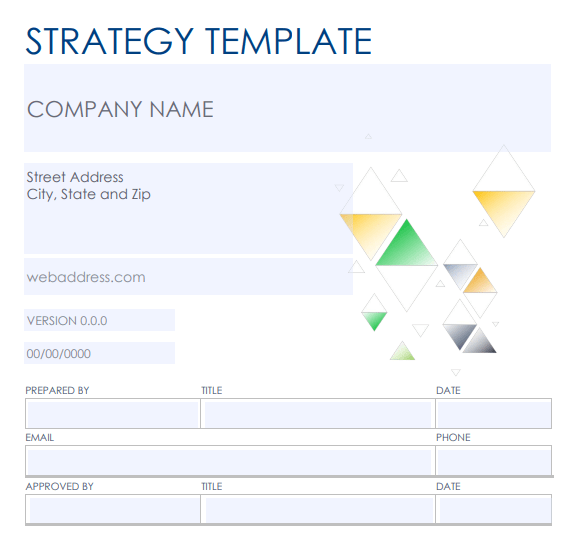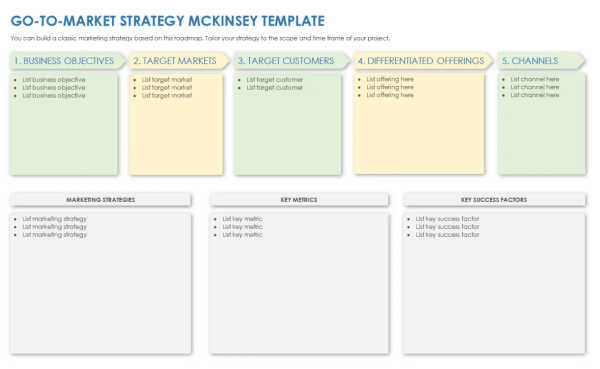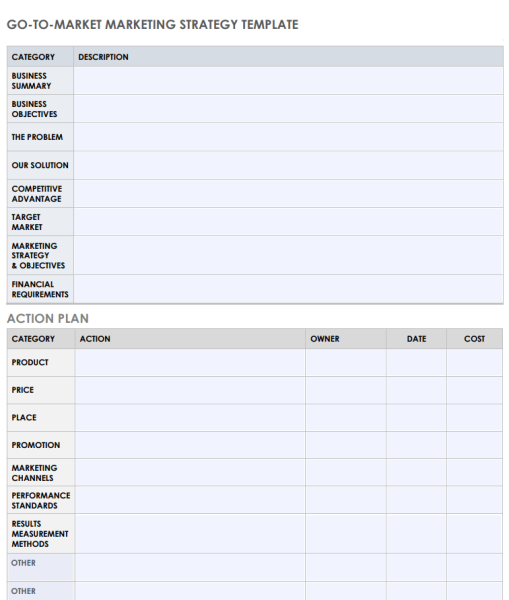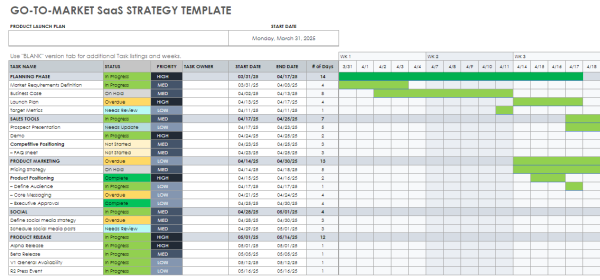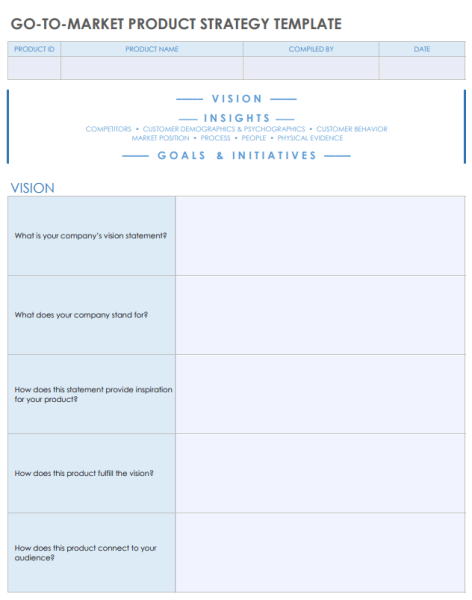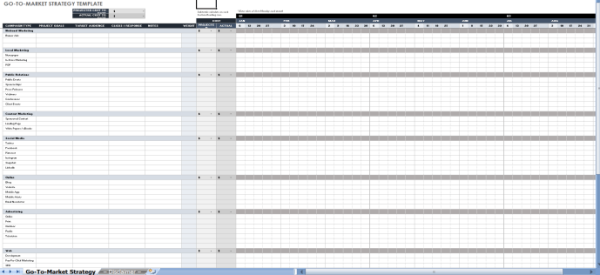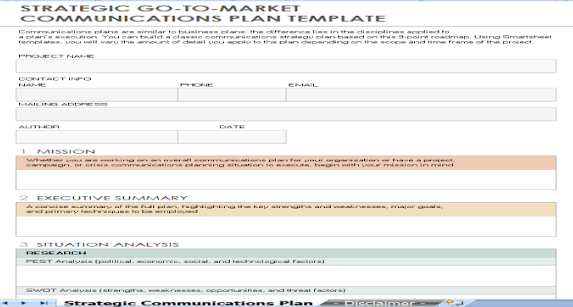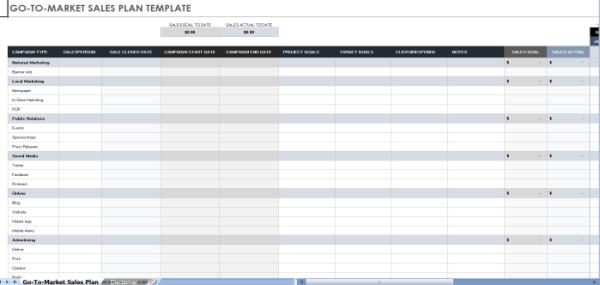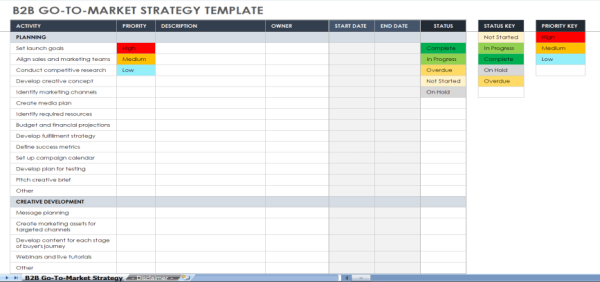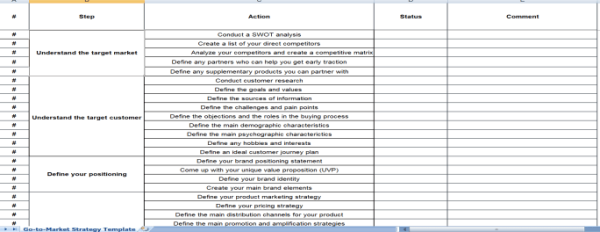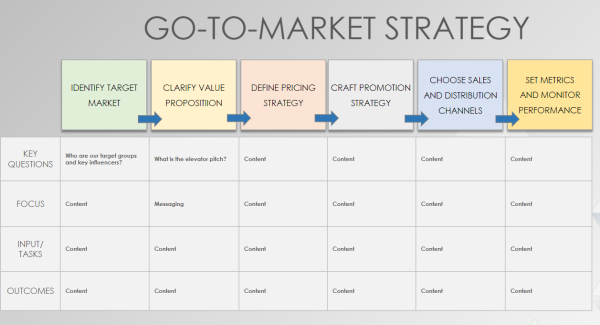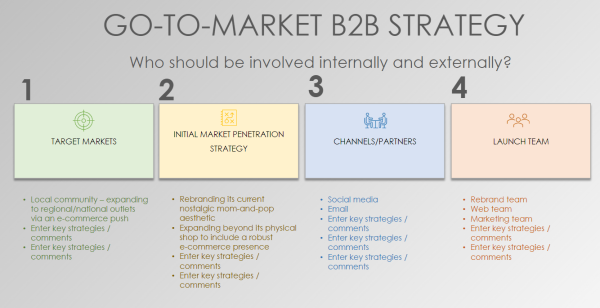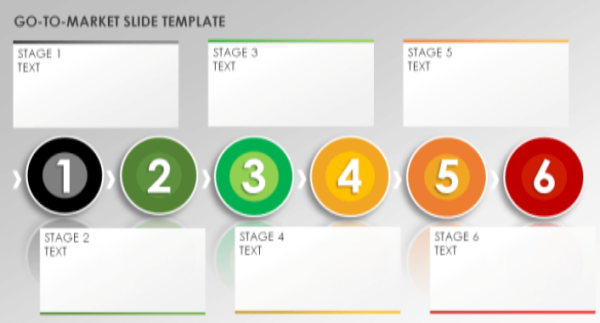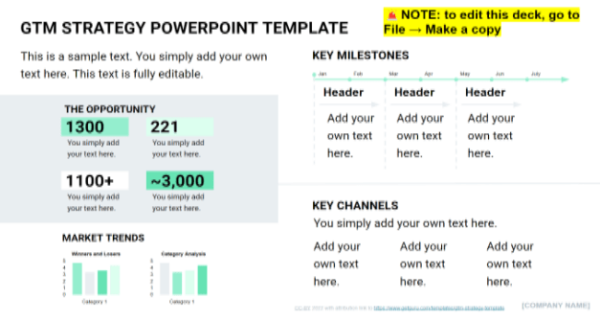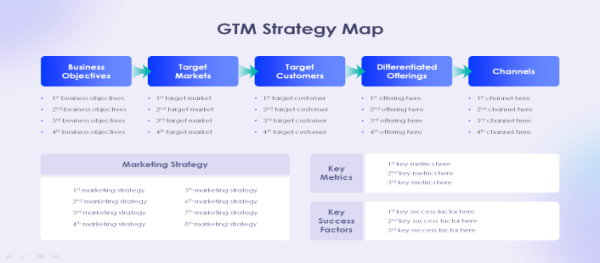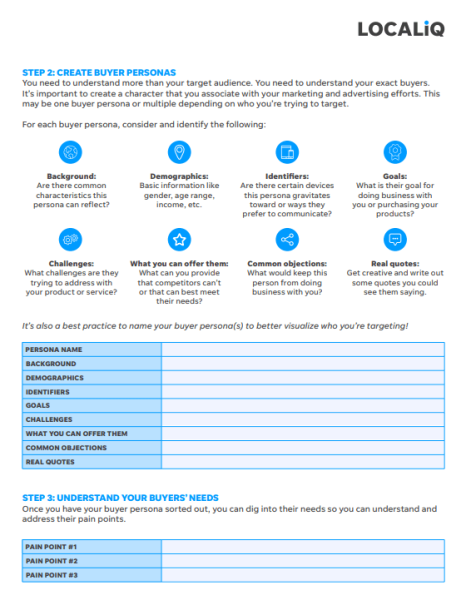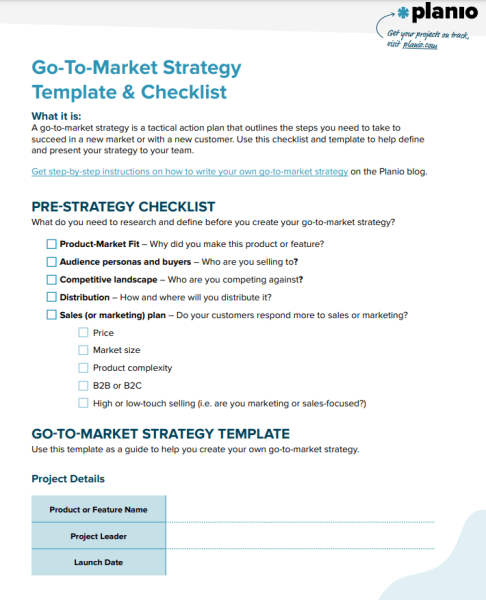In product management defining a go-to-market strategy is an essential piece of the puzzle to ensure you understand the customer’s mindset.
Amazon famously revealed in Working Backwards they use a Press Release template that they spend hours refining and reviewing before building products.
A good go-to-market strategy template sets the plan for success and answers questions like what problem are you solving by launching the product, who is the customer and what are their pain points, what do the competition and demand look like in the target market, and how will you create demand and reach the target customers.
That is why this online word go-to-market strategy from aha! a product management company is one of my go-to templates when starting any marketing strategy.
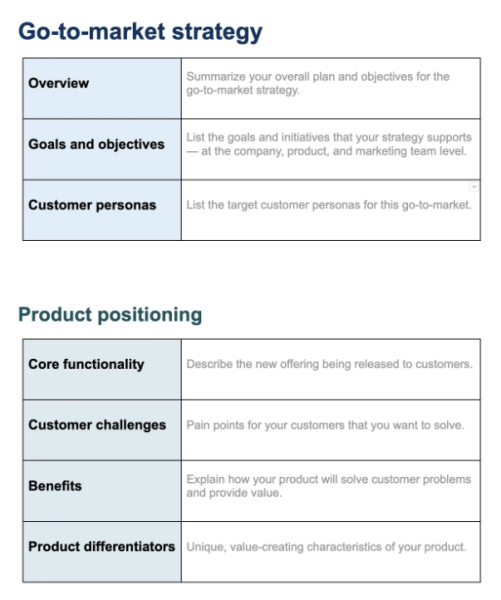
Go-to-market strategy vs. a marketing plan
A go-to-market strategy is for a new product launch or expansion of an existing product. On the other hand, a marketing plan explains how you will execute the strategy. A go-to-market strategy is drawn from a marketing plan but is launch specific.
Go To Market Strategy Template Word
Why is it so important to have a Go-to-Market Strategy in place
A go-to-market strategy is important for any organization. Organizations grow fast, so you have to make quick decisions that have long-lasting effects. When you have tight resources available, your teams can not go out of sync.
If a team works on a different playbook than other teams, you risk spending precious resources and time. A go-to-market template enables you to align your team so that your team members across marketing, sales, engineering, and product work towards the same objective.
Go To Market Strategy Template Excel
Go To Market Strategy Template PPT
Go To Market Strategy Template PDF
Go To Market Strategy Online Tools
ClickUp
Use the ClickUp template to organize the way you bring a new product to a market. Align your goals and collaborate with your team to map out the tasks. This template enables you to predict completion dates by adding due dates for every task.
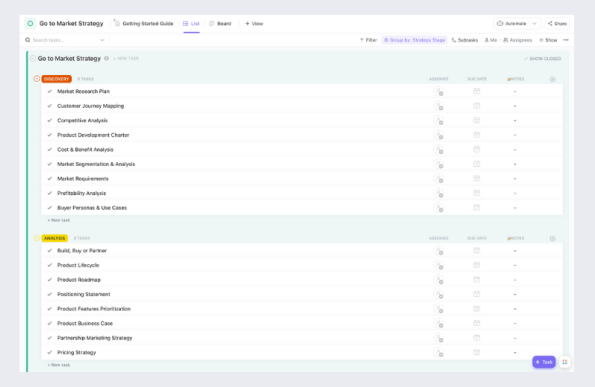
Asana
Whether you’re expanding your product, launching a new one, or relaunching an existing product, your go-to-market strategy will have several moving parts. The Asana go-to-market strategy template keeps you on track and aligns your team.
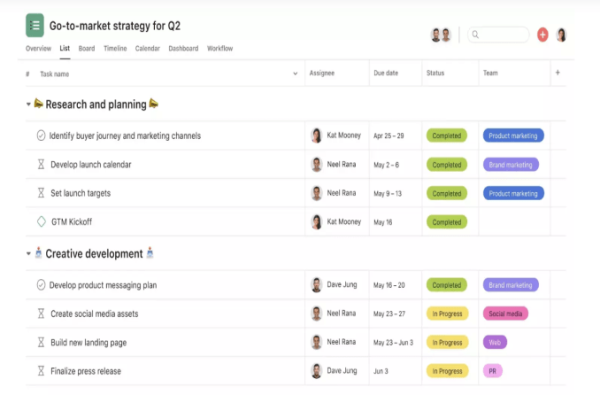
Miro
The Miro template outlines how your company brings a new product to the market. It helps align company goals and your team in one space.
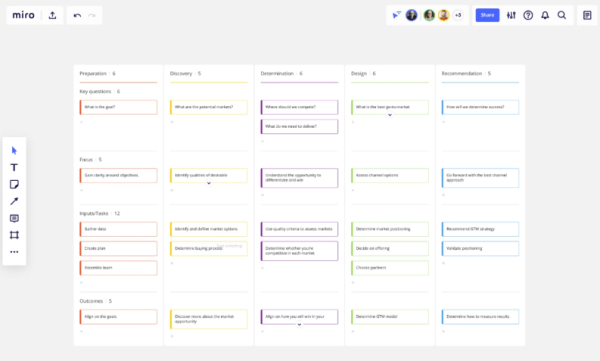
Lucidchart
The Lucidchart template can help you assign specific individuals or teams. Using the icons you can indicate the status of an action item, collaborate with your co-workers, and build a timeline. This template allows you to view an example of the GTM Gantt chart and can be customised.
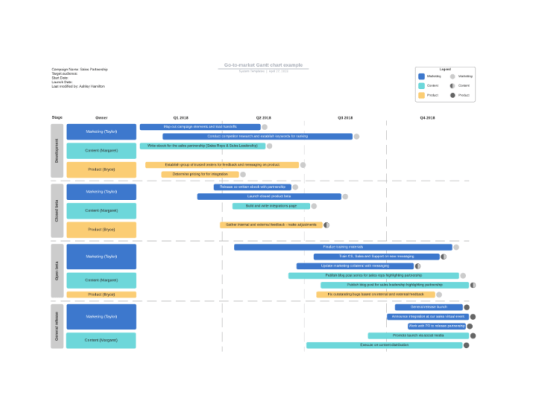
Lucidspark
The Lucidchart template enables you to develop a framework to bring your ideas to the market.

Figma
The Figma template helps bring your group to a room and collaborate to create an effective go-to-market strategy.
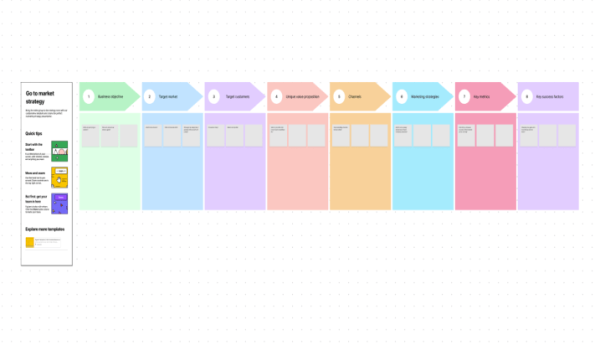
Go-to-market Strategy Best Practices
- Identify the problem
When launching a product, identify the problem it intends to resolve. This is known as the product market fit concept and determines the degree to which the market demand is satisfied. It enables you to launch the right product and gain a competitive edge.
- Define the target audience
To have an effective strategy, you must understand your target audience. The most common ways to define the target market are buyer personas and ideal customer profiles. These methods help specify the kind of people in your audience and narrow down your customer base.
- Research Demand and Competition
After identifying the target audience and proposition of your product, do some research. Before investing in bringing the product to the market, make sure there’s low competition and high demand for it. Conduct a competitive analysis to identify your indirect and direct competitors and uncover their weaknesses and strengths.
- Decide key messaging
Determine the key message that you want to convey to your customers. The best way is to tailor the messages for each buyer’s personas to address unique frustrations and values.
- Map the buyer’s journey
Map the customer’s path from problem realization, considering the product as a solution to their problem, and making the purchase decision. It is the main component of content marketing and helps you surface the right content at the right time.
- Pick marketing channels
Choose your marketing channel according to your target audience and where they are in their buyer’s journey. Some of the marketing channels you can choose from are paid search ads, social media, emails, and SEO content.
- Create a sales plan
The objective of your strategy is selling your product, so it’s important to decide how you will turn prospects into buyers. This is where your sales plan comes into play.
- Set concrete goals
Your go-to-market strategy must start with clear objectives. Goals enable you to have specific targets, a timeline, and ways of measuring progress. Without clear goals, it’s difficult to if the strategy is effective.
- Create clear processes
Create clear processes to execute your go-to-market strategy. It enables you to bring your products to the market as your strategy only succeeds when it is communicated and you execute it with your team.
Go-to-market strategy FAQs
What are the 4 Ps of go-to-market strategy?
The four Ps of a go-to-market strategy is price, product, promotion, and place.
What are the three phases of go-to-market strategy?
The three phases of a go-to-market strategy are research and planning, developing the marketing, and developing a roadmap.
How long does it take to develop a go-to-market strategy?
Most go-to-market strategies can be completed in 8-12 weeks. It depends on the goals, complexity, staff, and budget and begins with researching the business, competition, past initiatives, best customers, industry statistics, and target markets.
What is the central challenge of any go-to-market problem?
The challenges associated with the go-to-market strategy are unclear ide of the target market, failure to create a marketing plan, and unclear responsibilities within the teams.

